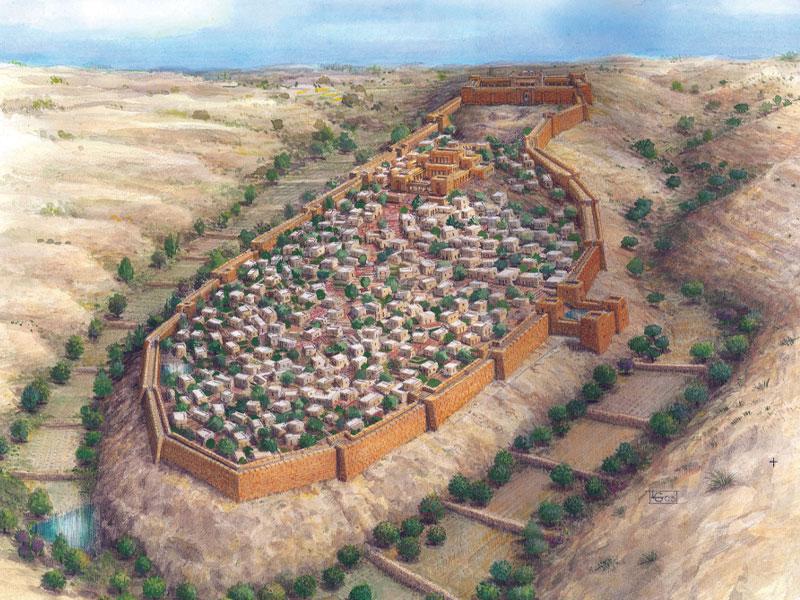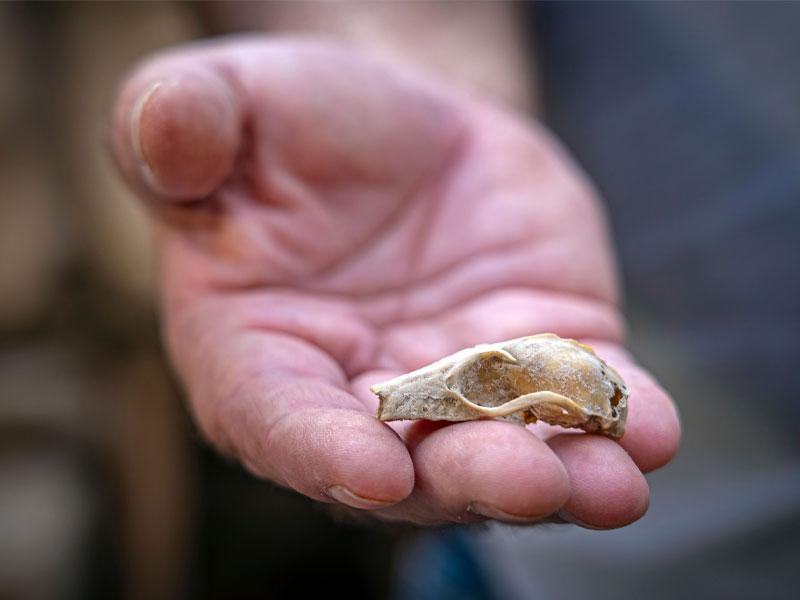A new scientific study of unprecedented scope has managed to accurately date findings from the First Temple period that were discovered in the city of David, shedding light on events mentioned in the Bible.

The research presents over one hundred radiocarbon dates taken from four different excavation areas
throughout the City of David, on the eastern and western slopes of the ancient city. These dates were obtained by sampling organic finds such as grape seeds, date pits, and even bat skeletons found in one of the structures. All of these underwent characterization and cleaning processes in laboratories and after being converted into graphite, they were inserted into a particle accelerator that moves at a speed of 3000 km per second, separating the carbon-14 from the organic material. Measuring the amount of carbon in the organic material and calculating it together with other variables allowed the researchers to accurately date many findings in the City of David.
The new research sheds light on one of the longstanding and controversial research questions regarding the nature and scope of Jerusalem during the reigns of David and Solomon and thereafter: the findings from the new research indicate that there was a widespread settlement in Jerusalem during this period.
In the current research framework, the researchers used ancient tree rings from Europe at the Weizmann Institute of Science to create a precise timeline of single-year dates, from which it is possible to accurately learn about fluctuations in the percentage of carbon-14 in the atmosphere. This addition allowed for a much more accurate dating of periods for which radiocarbon dating is usually not accurate enough, and in this way, it helped to scientifically reconstruct for the first time the history of Jerusalem from 1200 BCE - before the days of David and Solomon according to the biblical description - to the Babylonian destruction in 586 BCE.
According to Prof. Yuval Gadot of Tel Aviv University: "The new research allows us to study the development of the city: until now, most researchers have linked Jerusalem's growth to the west, to the period of King Hezekiah - just over 2700 years ago. The conventional assumption to date has been that the city expanded due to the arrival of refugees from the Kingdom of Israel in the north, following the Assyrian exile. However, the new findings strengthen the view that Jerusalem grew in size and spread towards Mount Zion already in the 9th century BCE, during the reign of King Jehoash, a hundred years before the Assyrian exile. In light of this, the new research teaches that the expansion of Jerusalem is a result of internal-Judean demographic growth and the establishment of political and economic systems."

The bat skull that assisted in dating the building., © Yaniv Berman, City of David Foundation
Further emerging from the study is that the wall of Jerusalem uncovered in several excavation areas on the eastern slopes of the city of David is also older than the date that was common until now. According to Dr. Joe Uziel of the Israel Antiquities Authority: "For decades, it was assumed that this wall was built by Hezekiah, King of Judah, but it is now becoming clear that it dates back to the days of King Uzziah, as hinted at in the Bible: 'And Uzziah built towers in Jerusalem... and strengthened them' (2 Chronicles 26:9).
According to Dr. Uziel: "Until now, many researchers have assumed that the wall was built by Hezekiah during his rebellion against Sennacherib, King of Assyria, in order to defend Jerusalem during the Assyrian siege. It is now apparent that the wall in its eastern part, in the area of the City of David, was built earlier, shortly after the great earthquake in Jerusalem, and as part of the construction of the city during the reign of King Uzziah. After the construction of the wall and until the Babylonian destruction, the city continued to grow and prosper."
The new research teaches about magnificent buildings and residences that were first built in the 9th–8th centuries BCE, and continued to be used continuously until 586 BCE, when the city suffered a violent destruction that ended the Kingdom of Judah. The breakthrough that allowed the use of radiocarbon dating on the layers of destruction from 586 BCE and earlier floors is related to the use of ancient tree rings that helped to accurately date these periods for the first time, which until now have been considered a "black hole" in the use of carbon-14 dating.
This new article joins a series of previous articles that together date Jerusalem for the first 4000 years of its existence. After one hundred and fifty years of archaeological research in the capital, a more complete and accurate picture of Jerusalem during the kingdom of Judah and the periods preceding it is emerging.
